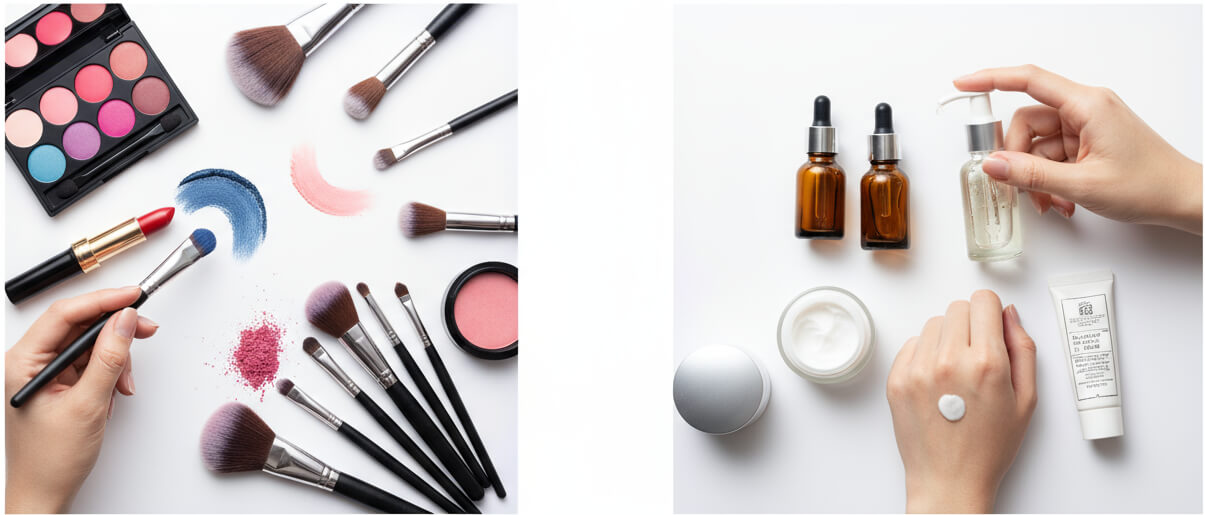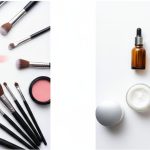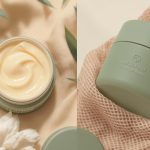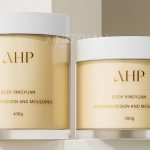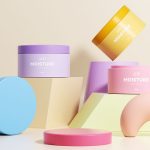Outline
- 1 Makeup vs. Cosmetics: What’s the Real Difference Between the Two?
- 2 What Is Makeup?
- 3 What Are Cosmetics?
- 4 Makeup vs. Cosmetics: The Structural Difference
- 5 Why the Distinction Matters for Beauty Brands and Procurement Teams
- 6 Is Sephora a Cosmetic?
- 7 What Do You Mean by Cosmetic?
- 8 How Regulatory Definitions Shape the Beauty Market
- 9 Consumer Perception and Marketing Language: Why Words Matter
- 10 Evolution of Makeup and Cosmetics: A Brief Historical Look
- 11 Future Trends in Makeup and Cosmetics
Makeup vs. Cosmetics: What’s the Real Difference Between the Two?
In the beauty business, the words makeup and cosmetics are often treated as synonyms—but they aren’t. For industry professionals, brand strategists, and procurement specialists, understanding their difference is key to labeling accuracy, market positioning, and consumer communication. Let’s unpack what truly sets them apart.
Makeup is a subset of cosmetics. While makeup refers to products used to enhance facial features—like lipstick, eyeshadow, or foundation—cosmetics include all personal care and beauty products, such as skincare, haircare, fragrances, and body care. Every makeup item is a cosmetic, but not every cosmetic is makeup.
Beyond vocabulary, this difference defines product regulations, brand strategy, and even the global supply chain. Let’s explore both categories and see why the distinction matters more than most realize.
What Is Makeup?
In professional terminology, makeup (also known as color cosmetics) refers to decorative beauty products applied to the face or body to alter, define, or enhance appearance. Unlike skincare, makeup’s primary goal is visual transformation.
Key Characteristics of Makeup
- Purpose: Aesthetic enhancement rather than care or cleansing.
- Typical Products: Foundation, eyeshadow, lipstick, mascara, blush, highlighter, bronzer, and setting spray.
- Application Area: Primarily the face; sometimes the body (e.g., body shimmer, contour).
In the consumer market, makeup falls within the decorative cosmetics segment, which accounts for roughly 35% of the global beauty industry’s revenue. According to Statista, the global makeup market reached USD 95 billion in 2024, driven by post-pandemic recovery and the rise of hybrid products.
Makeup in Professional Context
For industry insiders:
- Brand marketers use makeup to define subcategories—eye, lip, and complexion.
- Procurement managers treat makeup products as high-margin items with shorter innovation cycles.
- Manufacturers focus on pigments, emollients, and film-formers to achieve long-lasting visual effects.
Materials and Formulation
Formulating makeup products involves balancing pigment dispersion, skin adherence, and sensory feel.
- For example:Foundations rely on silicone emulsifiers for smooth texture.
- Lipsticks use waxes and oils for glide and shine.
- Eye products require ophthalmologist-tested ingredients to ensure safety.
Brands like MAC Cosmetics, NARS, and Charlotte Tilbury dominate the color cosmetics field by mastering pigment quality and sensory innovation.
What Are Cosmetics?
Cosmetics encompass a much broader spectrum. The U.S. FDA defines cosmetics as “articles intended to be applied to the human body for cleansing, beautifying, promoting attractiveness, or altering appearance.” This definition includes makeup, skincare, haircare, body care, fragrance, and hygiene products.
Types of Cosmetics
- Skincare: Moisturizers, serums, cleansers, sunscreens.
- Haircare: Shampoos, conditioners, masks, colorants.
- Body care: Lotions, deodorants, soaps, scrubs.
- Fragrance: Perfumes, mists, colognes.
- Oral care: Toothpaste, mouthwash, whitening products.
- Makeup: Foundations, mascaras, lipsticks (the decorative subset).
Global Regulatory Scope
Each region defines and regulates cosmetics differently:
- United States (FDA): Focuses on safety, labeling, and non-medical claims.
- European Union (EU 1223/2009): Requires ingredient safety assessment, notification to CPNP, and strict labeling compliance.
- China (CSAR 2021): Introduces ingredient safety reporting and pre-market registration for “special cosmetics” such as hair dye and sunscreen.
This means a moisturizing foundation could be considered both a makeup and a cosmetic depending on local definitions—a key concern for international brand procurement teams.
The Scientific and Care Perspective
Unlike makeup, cosmetics often aim to maintain or improve skin and hair health.
- This involves:Active ingredients like niacinamide, hyaluronic acid, and vitamin C.
- Delivery technologies like liposomes or microencapsulation.
- Claims validation through dermatological testing.
Leading cosmetic companies like L’Oréal, Estée Lauder, and Shiseido invest heavily in R&D and biotechnology, merging dermatology with aesthetics.
Makeup vs. Cosmetics: The Structural Difference
At its core, the difference lies in function and scope.
Makeup is about appearance alteration, while cosmetics include everything from care to cleansing.
| Category | Key Function | Examples | Regulation |
| Makeup | Enhance visual appearance | Lipstick, Mascara, Foundation | Decorative cosmetics |
| Cosmetics | Beautify, cleanse, or protect | Makeup + skincare + fragrance | Broader cosmetic regulations |
In industry terms, makeup = decorative cosmetics, whereas cosmetics = total beauty care.
Labeling and Product Classification
Proper classification determines:
- Label language (“foundation” vs. “BB cream moisturizer”).
- Claims (“brightening” vs. “anti-aging”).
- Packaging compliance (INCI listing, batch codes, shelf life).
For example:
- A lip balm with tint is both skincare and makeup.
- A BB cream with SPF is a cosmetic under the FDA but a quasi-drug in Japan.
Procurement Implications
Procurement teams categorize suppliers based on product type:
- Makeup suppliers focus on color dispersion, texture, and packaging design.
- Cosmetic suppliers emphasize active ingredients, stability, and formulation compliance.
Understanding these lines prevents costly delays in regulatory approval or market entry.
Why the Distinction Matters for Beauty Brands and Procurement Teams
For professionals, misusing these terms can lead to miscommunication across marketing, R&D, and regulatory teams.
Here’s why precision matters:1. Compliance and Labeling
Labeling laws differ for makeup and cosmetics.
- For instance:The EU mandates an ingredient list in descending order of weight.
- The U.S. FDA requires warnings for eye-area color additives.
- China’s CSAR requires product testing and ingredient reporting for imported cosmetics.
A product misclassified as “makeup” might skip vital compliance steps—risking recalls or penalties.
2. Market Strategy
“Cosmetics” appeals to wellness-oriented consumers, while “makeup” attracts fashion-focused buyers.
- For example:Glossier markets itself as a “skincare-first makeup brand.”
- Dior Beauty emphasizes luxury and artistry, aligning makeup with couture.
Knowing which category your product fits helps determine branding tone, retail channel, and pricing model.
3. Supply Chain Efficiency
Procurement specialists benefit from clarity:
- Makeup requires color consistency, fast turnaround, and frequent new launches.
- Cosmetics focus on shelf stability, long lead times, and scientific validation.
For instance, L’Oréal operates separate R&D divisions for Active Cosmetics (care) and Luxury Makeup (color) to streamline operations.
Is Sephora a Cosmetic?
Sephora, founded in France in 1969, is a beauty retailer, not a manufacturer. However, it embodies both categories.
Sephora sells makeup (e.g., Fenty Beauty foundations) and cosmetics (e.g., skincare by Drunk Elephant).
Its private label, Sephora Collection, merges skincare, body care, and decorative products—proving how blurred the line between the two categories has become.
Professionals studying Sephora’s merchandising strategy can see how cross-category marketing drives higher cart values and brand loyalty.
What Do You Mean by Cosmetic?
Etymologically, “cosmetic” comes from the Greek kosmetikos, meaning skilled in adornment. Today, it refers to any non-medical product used to improve appearance—covering both beautifying and cleansing items.
A few examples:
- A cosmetic serum enhances skin texture.
- A cosmetic shampoo improves hair shine.
- A cosmetic lotion hydrates without therapeutic claims.
Understanding this prevents “drug claim” violations, where companies risk regulatory scrutiny by making unapproved health promises.
How Regulatory Definitions Shape the Beauty Market
Regulatory frameworks directly shape product innovation and marketing.
1. United States
- Overseen by the FDA’s Office of Cosmetics and Colors.
- No pre-market approval, but post-market accountability.
- “Cosmeceuticals” are not legally defined, though widely used in marketing.
2. European Union
- Governed by EU Regulation 1223/2009.
- Requires product safety assessments and Responsible Person
- Ingredients like parabens and formaldehyde donors face strict limits.
3. China
- The CSAR (Cosmetic Supervision and Administration Regulation) classifies cosmetics as “special” (e.g., sunscreen, hair dye) or “general” (e.g., lipstick, lotion).
- Animal testing exemptions apply only for certain local manufacturers.
These differences affect formulation, packaging, and global sourcing. A procurement manager buying foundation pigments for export must ensure they meet all three regions’ color additive lists.
Consumer Perception and Marketing Language: Why Words Matter
From a branding perspective, the words you use shape consumer expectations.
- “Makeup” signals creativity, transformation, and artistry.
- “Cosmetics” suggest care, quality, and trust.
For example:
- Fenty Beauty emphasizes inclusive makeup shades—creative self-expression.
- The Ordinary markets as a “clinical cosmetic brand,” highlighting ingredient transparency.
Language also impacts SEO and e-commerce categorization. Online shoppers searching “best cosmetics” might expect skincare, while “best makeup” returns color products. Smart brands optimize for both terms to capture a wider audience.
Evolution of Makeup and Cosmetics: A Brief Historical Look
Ancient Egyptians mixed crushed minerals for eye pigments—an early form of makeup.
By contrast, Romans and Greeks developed scented oils and soaps, laying the foundation for cosmetics.The industrial revolution introduced mass manufacturing, while the 20th century brought brands like Max Factor and Revlon, which commercialized makeup for everyday use.
In modern times, K-beauty and J-beauty innovations have blurred lines between makeup and skincare, leading to products like CC creams and cushion foundations—half cosmetic, half color.
Today’s consumers expect multitasking products that both beautify and nourish, prompting the rise of hybrid formulations.
Future Trends in Makeup and Cosmetics
The next decade will redefine boundaries between care and color. Key movements include:
- Hybridization:
- Products offering both skincare and makeup benefits—like tinted serums—dominate innovation pipelines.Sustainability:
Brands adopt biodegradable packaging, refill systems, and vegan formulations.
Example: Dior’s refillable Rouge lipstick reduces waste while retaining luxury appeal.
- Personalization and AI:
Tools like L’Oréal’s Perso device create on-demand foundation shades or serums.
- Transparency and Regulation:
- Consumers demand full ingredient lists and ethical sourcing documentation.Digital Beauty:
AR try-ons and social commerce transform how consumers discover both makeup and skincare.For procurement and R&D teams, these trends call for supplier flexibility, ingredient traceability, and adaptive formulation capabilities.
Makeup decorates, cosmetics care. For industry professionals, recognizing this relationship informs branding, formulation, and compliance. In today’s hybrid beauty market, understanding these definitions isn’t just semantics—it’s a competitive advantage that drives smarter innovation and procurement.
